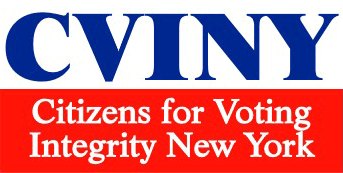Times Union: NY Voting Rights Act doesn't violate Constitution, appellate court rules “Race-based districting is only one of the possible remedies under (the law),” the decision said. “The (law) also contemplates remedies that do not sort voters based on race, such as ranked-choice voting, cumulative voting, limited voting and the elimination of staggered terms.”
TIMES UNION
The lawsuit was brought by residents of the town of Newburgh who claimed its at-large election system diluted the vote of racial minorities in violation of the state law.
By Dan Clark,Capitol Bureau
Jan 30, 2025
A state appellate court upheld the New York Voting Rights Act as constitutional
ALBANY — The New York Voting Rights Act, which sets guardrails for localities to follow in administering fair elections, was upheld as constitutional Thursday after a state appellate court reversed a decision that struck it down last year.
The case was filed by residents of the town of Newburgh who claimed its at-large election system diluted the vote of racial minorities in violation of the state law.
The town shot back with an argument of its own: that the law violates the Equal Protection Clause of the U.S. Constitution. That requires that all citizens be treated equally under federal or state law.
But the Appellate Division, Second Department wrote in its decision Thursday that it wasn’t convinced the state law conflicted with the Constitution.
“It cannot be said as a matter of law on this record that compliance with the (law) would force the defendants to violate the Equal Protection Clause,” Presiding Justice Hector LaSalle wrote in the four-member panel’s decision.
David Imamura, an attorney with the law firm Abrams Fensterman who represented the residents, said he had expected the court to side with them.
“We are pleased, though not surprised, that the appellate panel upheld the constitutionality of the New York State John R. Lewis Voting Rights Act and allowed the Newburgh residents who have been shut out of their (town’s) at-large electoral system to seek a fair shot at choosing candidates to represent them,” Imamura said.
The law was approved by the state Legislature three years ago to enact a series of new provisions intended to protect voters. That includes a prohibition on voter dilution, when an election system limits the voting power of a certain group of people.
In the case brought against the town of Newburgh, that group of people was the locality’s Black and Hispanic residents, who represent about 40% of its population.
They argued that the town’s use of an at-large voting system unfairly puts their voting blocs at a disadvantage. All four elected members of the Town Board are white.
An at-large system is one that doesn’t split a municipality into separate election districts. All voters instead choose a certain number of candidates from a list. Those who receive the most votes are elected to however many positions exist.
The Town Board in Newburgh has four members. That means all voters in the town choose four candidates from the list to comprise the body. All of them represent the entire town rather than a section.
But the residents who sued the town claimed that it has a pattern of racially polarized voting. That’s when voting patterns show that voters of the same race diverge in their electoral choices from the rest of the population.
They argued that, despite voting together for a candidate of their choice, they have been unable to elect someone to the Town Board because of the at-large system.
Because they’re outnumbered by white voters in the town, they said, there is no avenue for them to elect their preferred candidate. They proposed using a system of election districts, but the town disputed that they were at a disadvantage.
The town argued instead that the state law violated the Equal Protection Clause because it would require them to devise a system that gives residents grouped by race a greater chance at electoral success than its at-large system.
The appellate court disagreed, writing that the law was written as race-neutral in the sense that, if the races were reversed, white voters could bring the same claim against the town.
The town also would not have been forced to adopt a system of election districts, the court wrote. The law provides several options to address a violation.
“Race-based districting is only one of the possible remedies under (the law),” the decision said. “The (law) also contemplates remedies that do not sort voters based on race, such as ranked-choice voting, cumulative voting, limited voting and the elimination of staggered terms.”
The case now returns to state Supreme Court for further proceedings, which could result in another appeal. Attorneys for the town did not immediately comment on the decision Thursday.
